Recovery and Complementary Treament
Definition of Mental Illness Recovery:
If your symptoms manifest into a mental illness, it takes much more effort to recover. The good news is that recovery is still possible.
Recent advancements in the field of mental health have improved the chances of recovery significantly. However, this is different from physical illness: unlike physical illnesses, which usually rely on medication, mental illnesses are much more difficult to recover from because each case is unique. There is no magic pill to take; rather, you must find the cause behind your illness and deal with it for recovery. Although recovery can be a long and difficult process, it is ultimately achievable..
Hamilton County Mental Health and Recovery Services Board [ http://www.mhrecovery.com/definition.htm ] defines mental health recovery as
” a deeply personal, unique process of changing one’s attitudes, values, feelings, goals, skills and/or roles. It is a way of living a satisfying, hopeful, and contributing life even with limitations caused by the illness. Recovery involves the development of new meaning and purpose in one’s life as one grows beyond the catastrophic effects of mental illness.”
Focus on root causes of illness and recovery path finding,
not the name of diagnosis
As each mental illness is unique to its patient, collaboration between the patient, family, peers, and the health care provider is necessary to identify the causes of the illness. It often takes many hours of discussion and interview to understand, and then, diagnose, the mental illness. A good understanding of the cause is necessary in determining the path of recovery. Participation and cooperation can go a long way in helping identify this problem, and ultimately lead to its resolution.
Processes of Recovery:
For the most part, creating a meaningful life after healing from a mental illness is the most important part of recovery. [http://www.mhrecovery.com/Living%20the%20Empowered%20Life%20web_files/frame.htm]
However, the recovery is a process. Any shortfall during the process may become an obstacle to the path of the recovery. A simple way to describe the mental illness development and its recovery helps to understand the support needed for a full recovery.
Healthy Person – Prior to Mental Illness
Before suffering from a mental illness, a person lives an integrated life full of meaning and attributes. Each petal on the diagram above represents a particular aspect of his or her life that provides meaning.
Person with Mental Illness
By the time people are diagnosed with a mental illness, they are isolated and lose connection with everything that once gave their lives meaning. They grow distant from their family and work, finding it difficult to engage in the activities that once gave them happiness. Often, these changes developed over time while the person has been suffering chronic mental health conditions.
Person in Recovery Process
In order to facilitate their recovery, they must reconnect with these petals. They must rebuild the bridges that were burnt by the illness to rebuild their lives, helping them lead a more meaningful life after the illness. This is the most difficult part of the process. Recovery requires support from families, community, healthcare providers, friends, peers, and others to overcome obstacles and barriers. Stages of recovery are discussed as follows. As the person with mental illness begins to react with society again, disconnects in the form of social networking, employment, knowledge basis, etc. arise. Without these elements, mental treatment cannot achieve full effectiveness and recovery cannot complete, as the person with mental illness is facing another trauma of disconnect. However, peer support is a critical ingredient for recovery to bridge these gaps.
Person Making Progress in Recovery
As the diagram above demonstrates, recovery is a process. A person afflicted with mental illness gradually reconnects oneself to elements of one’s life. By reconnecting with family and dedicating themselves to work, he or she can reduce the role of the illness on his or her life, creating a more balanced lifestyle and, in time, ultimately recovering from the illness.
Key Elements for Mental Health Recovery:
The National Mental Health Information Center, www.SAMHSA.org, recently released their National Consensus Statement for Mental Health Recovery with 10 fundamental elements for mental health recovery. You can find the details at http://store.samhsa.gov/shin/content/SMA05-4129/SMA05-4129.pdf.
A few key elements are worth mentioning here;
Hope:
Hope motivates and drives those with mental illnesses to overcome the barriers and obstacles that confront them. As we can not assume the person with mental illness is capable to find the options of recovery, hope may have to be fostered by families, health providers, friends, peers, and others. When the person with mental illness recovers to a certain stage, hope can be internalized. Hope is the catalyst of the recovery process.
Respect:
Respect from community, systems, and social acceptance and appreciation- including protection of rights and eliminating discrimination and stigma- is crucial in achieving recovery. Respect and acceptance enable the person to gain self-acceptance and hope.
Support from the community:
Recovery needs to take place with full support, which includes access to housing, mental health and healthcare treatment and services, complementary and naturalistic services, spirituality, education, social networking, and employment throughout the recovery processes. Families and communities must provide the opportunities and environment for the recovery to take place.
Individualized and person-centered:
The causes of mental illness are unique to each person, and therefore, the recovery plan is individualized and person-centered. The recovery pathways should be tailored according to the causes of illness, individual’s unique strengths and resiliencies as well as his or her needs, preferences, experiences, and cultural background. The recovery is an ongoing journey to reach an end result with optimal mental health and wellness.
Peer support and self-direction:
The recovery should focus on self-direction and strength-based support when the mental stresses are manageable. The strength-based path can help to gain confidence and thus the pace of recovery more efficiently.
Empowerment and Responsibility:
The person taking the recovery pathway is empowered to make choices based on their needs, wants, desires, and aspirations. With a defined rational recovery path, an individual gains control of his or her destiny and can take full responsibility of the recovery processes.
Stages of Mental Health Recovery:
Though each recovery plan is unique and individualized, it can roughly be categorized into four stages based on the level of recovery and the support needed. The Hamilton County Mental Health Recovery Board gave an effective presentation called The Role of Peer-to-Peer Services: Facilitating Personal Growth…Advancing Recovery by Kopache and Ostholthoff (2008) at Cincinnati VA Social Work Conference. [http://www.mhrecovery.com/NKU_peer_services_final.pdf ]
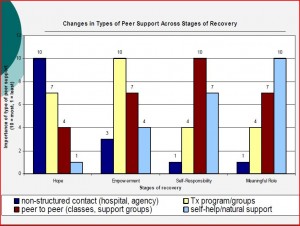
Cited from “The Role of Peer-to-Peer Services: Facilitating Personal Growth…Advancing Recovery” by Kopache and Ostholthoff (2008) at Cincinnati VA Social Work Conference.
Stage one (Hope)
The individual and support group are developing hope for recovery. The emphasis is on the mental illness treatment. The support group from family, friends, and health providers is taking the primary role as the individual himself/herself is still in a stage of dependent/unaware of own conditions.
Stage two (Empowerment)
The focus shifts from mental illness treatment to advocacy and implementation of a recovery plan. Although mental illness is still critical at this stage, peer support begins to take place for day programs and group interactions. At this stage, the individual has realized his/her mental health conditions but in a dependent stage but aware of his/her conditions.
Stage three : Self-Responsibility
The individual becomes capable of interacting and taking responsibilities. Peer support becomes critical at this stage, especially in communication, social networking, and rebuilds skills.
Stage four : Meaningful Role
The individual gains employment and integrates with the society. At this point, the individual becomes fully independent and “graduates” from the system to reach a full recovery and regain a meaningful life.
Complementary and Alternative Medicine (CAM):
The concept of using non-traditional methods of treatment is not new. Throughout history, non-traditional methods of treatment have been employed by a variety of cultures for many hundreds of years. Their popularity is a testament to their effectiveness. We define Complementary and Alternative Medicine as any form of treatment intended to be used in conjunction with (complementary) or in the place of (alternative) normal treatments.
Below are some of the most common CAM techniques recommended by the National Center for Complementary and Alternative Medicine [http://nccam.nih.gov/health/whatiscam]:
Massage therapy includes many different techniques in which practitioners manually manipulate the soft tissues of the body.
Most meditation techniques, such as mindfulness meditation or transcendental meditation, involve ways in which a person learns to focus attention.
Movement therapies include a broad range of Eastern and Western movement-based approaches; examples include Feldenkrais method, Alexander technique, Pilates, Rolfing Structural Integration, and Trager psychophysical integration.
Relaxation techniques, such as breathing exercises, guided imagery, and progressive muscle relaxation, are designed to produce the body’s natural relaxation response.
Tai chi and qi gong are practices from traditional Chinese medicine that combine specific movements or postures, coordinated breathing, and mental focus.
The various styles of yoga used for health purposes typically combine physical postures or movement, breathing techniques, and meditation.
Although mainstream methods of treatment can be effective, the integration of complementary and alternative medicines can boost the likeliness that they will succeed. While these primary methods of treatment deal with the root cause of the disease, complementary and alternative medicines can help manage symptoms and maintain a healthy connection between the mind and the body.
Other Complementary Mental Health Treatments recommended:
[http://causes.msn.com/mental_health_month_2013#section=article_6_3]
Along the same path, complementary treatments are recommended as follows by MSN Causes with explanations. It helps those with mental illnesses to engage in a positive and active life style with proper nutritious support, or helps those with mental flu to improve immunity to develop into mental illnesses.
Treatment 1: Exercise
If you suffer from depression, leaving the house at all during a depression can be rough. But it works, and there’s a reason that it’s the No. 1 recommendation if you are suffering from depression. And it’s not just about endorphins, although those are fantastic, too. Exercise naturally increases the concentration of neurotransmitters such as serotonin, which contributes to feelings of happiness and wellbeing. In fact, people who exercise regularly have lower levels of depression than those who don’t. And you don’t have to do much; about half an hour three times a week of cardio is enough.
Treatment 2: Meditation
For centuries, Tibetan monks have known the benefits of meditation, and modern science is starting to explain why it is so powerful in alleviating depression. Meditation increases serotonin production in the brain, and in some studies has been shown to be as effective as prescription antidepressants. But what’s fascinating is that the simple act of slowing down and focusing on your breath can also cause structural changes in the brain that can have a profound effect on mood. For instance, a recent article in Frontiers of Human Neuroscience showed that people who practiced mindful meditation showed decreased activity in the amygdala, an area of the brain that regulates anxiety and the “fight or flight” response.
Treatment 3: Get together with family or social groups
Depression often leads to isolation, which leads to more depression —it’s a vicious circle. Socializing may be the last thing you want to do, but getting out of the house and interacting with people can really help take your mind off things. Meet a friend for coffee. Go shopping with your sister. Join a book club. Get involved with a volunteer organization. What you do doesn’t matter as much as getting some real human interaction. And no, Facebook doesn’t count.
Treatment 4: Get outside
Don’t just get some exercise — get outside. Many experts think that as a society we and our children have become increasingly disconnected from nature, and they speculate that the dissociation is leading to higher levels of obesity and depression. So take a walk outside and breathe some fresh air. It may not cure all that ails you, but it’ll clear your head.
Treatment 5: Vitamin D
Vitamin D deficiency is associated with autoimmune and infectious diseases, cancer and cardiovascular disease. Is it any surprise that not getting enough of the “sunshine vitamin” is also associated with mental illness? Vitamin D is converted to a hormone in the liver and that hormone is used in activating the cells that create dopamine and serotonin in the brain. To increase your intake in Vitamin D, you can consume more foods that contain it (milk, fish, eggs, and mushrooms, among other foods), or Vitamin D pills. Furthermore, you can combine Treatment 3 with this recommendation and soak up Vitamin D just by basking outdoors.
Treatment 6: Magnesium
Magnesium is the fourth most abundant mineral in our bodies, yet many experts believe we simply don’t get enough of it in our diet. While it’s difficult to become seriously deficient in magnesium, supplementing it into our diets seems to help a wide range of health problems, including asthma, diabetes and, yes, even depression. A Norwegian study of 5,700 people indicates that those with lower magnesium intakes had higher rates of depression. In addition, a study published in the Indian Journal of Physiology and Pharmacology shows that depressed people have lower levels of serum magnesium. Interestingly enough, every cup of coffee you drink packs a wallop of magnesium — so if you crave coffee, try magnesium and see what happens.
Treatment 7: Folate
The psychiatric world has known for decades that depression and low levels of folate often go hand in hand. Here’s why: Folate helps to regulate the production of dopamine, serotonin and norepinephrine. Beans and legumes are natural sources of folate. Recent studies indicate that folate intake from beans and legumes may not be sufficient for everyone. Ask your doctor for proper supplement.
Treatment 8: Eat your yogurt
Almost every day, there is new research conducted about the unexpected effects of probiotics. Recently, The Proceedings of the National Academy of Sciences published a study in which rats that were fed a daily probiotic supplement displayed far less stress, anxiety and depression than those who did not consume the supplement. When tested, they also showed lower levels of stress hormones.
Treatment 9: Ditch sweet drinks
We all know that sugary drinks aren’t great for your physical health, but it turns out that any sweetened drinks — regular or diet — are pretty bad for your mental health. The American Academy of Neurology released findings of a study that showed that people who drank more than four cups of soda or fruit punch each day were up to 38 percent more likely to experience depression. What’s surprising is that the diet drinkers fared even worse than those drinking sugar-sweetened beverages.
Treatment 10: Sleep
A large percentage of mental disorders go hand-in-hand with sleep problems. Scientists long thought lack of sleep contributed to depression or vice versa — or, in the case of schizophrenia, blamed medication for insomnia. But now, a surprising finding sheds new light on the role of sleep. It turns out that many people with mental illness have altered circadian rhythms, leading to excessive wakefulness at night and greater fatigue — one of the hallmarks of depression — during the day. While there is no consensus yet, scientists wonder whether manipulating those altered circadian rhythms into “normality” might ameliorate some mental illnesses.
Other resources:
A few recommended internet sites [http://www.mhrecovery.com/articles.htm] and self-help books [http://www.mhrecovery.com/books.htm] are available for those who would like additional resources to help them recover from mental illness. [http://www.mhrecovery.com/index.htm]. The Hamilton County Mental Health and Rrecovery Sservices board website provides a very thorough and helpful referencethrough its many presentations. [http://www.mhrecovery.com/presentations.htm]
For those who are interested in reading more details, the National Institute of Mental Health under U.S. Department of Health and Services also provided much thorough resources about professional treatment, complementary treatment and nutrition which promoting mental health. [http://www.nimh.nih.gov/index.shtml]
Disclaimer:
we do not endorse employing complementary or alternative medicines as primary methods of treatment. These should be used in conjunction with treatments prescribed by your psychiatrist. Nonetheless, consult with your physician and mental health professional for exercises or complementary treatment menthods suitable to your mental and physical conditions.

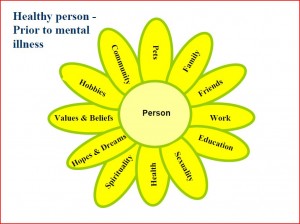
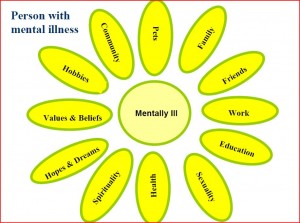
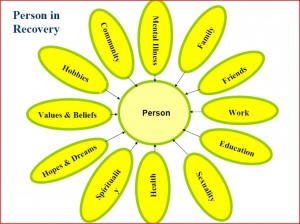
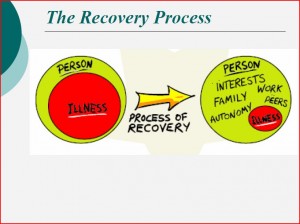
I think this internet site has got some really superb info for everyone . “Nothing great was ever achieved without enthusiasm.” by Ralph Waldo Emerson.
. “Nothing great was ever achieved without enthusiasm.” by Ralph Waldo Emerson.
Nice read, I just passed this onto a friend who was doing some research on that. And he actually bought me lunch since I found it for him smile Therefore let me rephrase that: Thanks for lunch! “A human being has a natural desire to have more of a good thing than he needs.” by Mark Twain.
I see something genuinely interesting about your blog so I saved to favorites .